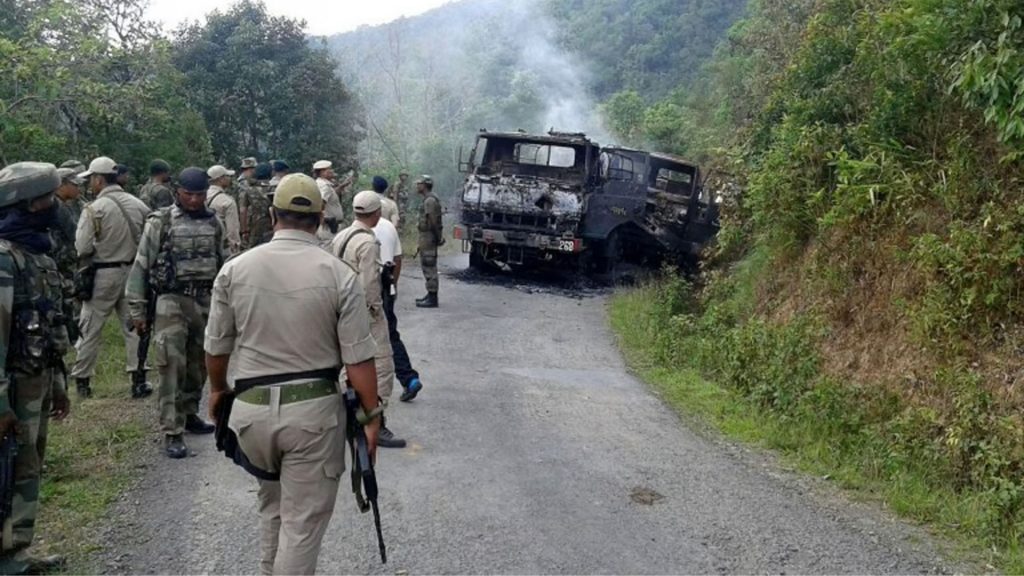Ethnic violence that has rocked Manipur for more than 400 days has now taken a deadlier turn with the warring groups using drones and rocket-propelled grenades (RPGs) even as fresh killings over the weekend kept the north-eastern state on the edge. Six people were killed in renewed violence in Jiribam district Saturday. Militants entered an isolated home about five kilometres away from the district headquarters and shot a man while he was asleep. Following this, a fierce gunfight erupted between members of the conflicting Kuki and Meitei communities in the hills, about seven kilometres from the district headquarters, resulting in the deaths of five more people. Jiribam, an ethnically diverse district, that had previously remained largely unaffected by the ethnic conflicts in the Imphal Valley and the surrounding hills, experienced an outbreak of violence in June this year following the killing of a 59-year-old man from one community by militants from another. Saturday’s gunfight marks the highest number of casualties in a single day during the recent bout of violence that started a week ago.
Meanwhile, the use of drones and RPGs has escalated the conflict to a war-like situation. In light of the fresh violence, Chief Minister N Biren Singh met Governor Lakshman Prasad Acharya Sunday to present a memorandum requesting control over the Unified Command, which manages security operations in the north-eastern state. Additionally, the Chief Minister called for the termination of the Suspension of Operations (SoO) agreement with the Kuki insurgent groups. The SoO pact was signed by the Centre, the Manipur government and two conglomerates of Kuki militant outfits – Kuki National Organisation and United People’s Front — in 2008 and has periodically been extended ever since. The Unified Command is currently overseen by a coalition of officials from the Union Home Ministry, state security forces, and the Army. This development is seen as significant, given that the BJP holds power in both the state and the Centre, suggesting a potential conflict between the two administrations.
With a population of 3.2 million, Manipur has been split into two ethnic regions since the conflict erupted in May 2023 — the valley controlled by the Meiteis and the hills dominated by the Kukis. These areas are divided by a stretch of no-man’s land that is overseen by Central paramilitary forces. More than 225 people have lost their lives in the violence, while about 60,000 people have been displaced. All the while, the Chief Minister has shrugged off multiple demands for his resignation despite his inability to control violence in the troubled state for more than one year. Besides, the Opposition has criticised Prime Minister Narendra Modi for not visiting the strife-torn state even once in these 400 days. What should truly worry the Indian government is the escalation of the trouble.
Earlier, both sides involved in the violence were limited to using only hand held weapons. The recent surge of violence has introduced drones and other modern weaponry indicating the clear involvement of external forces. This becomes all the more complex if the clashes between rebels and the junta in neighbouring Myanmar and the unrest in nearby Bangladesh are taken into account. This may also show that the situation in Manipur may have already gone out of control and maybe the government has given up on all hopes of settling the issue. Earlier, in the first phase of violence, excuse for neglecting the trouble was election in Karnataka. Nothing seems to have been done in the interim period. Now the excuse should not be the Haryana and Jammu & Kashmir elections. While the government in Delhi wants to play the peacemaker in the faraway Russia-Ukraine conflict, it has to first put a stop to the war in its backyard.
